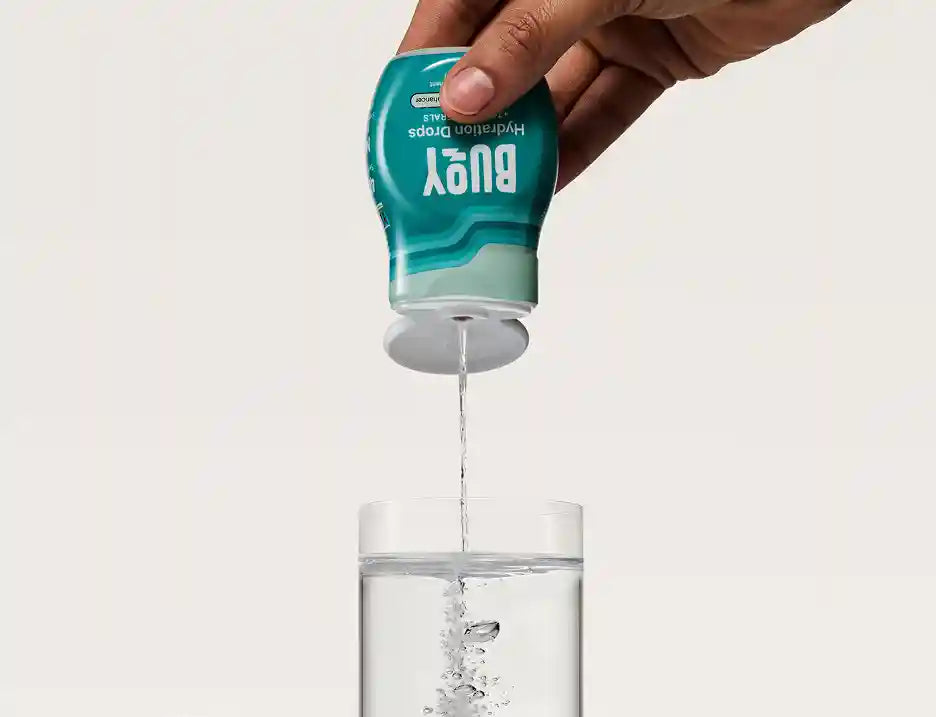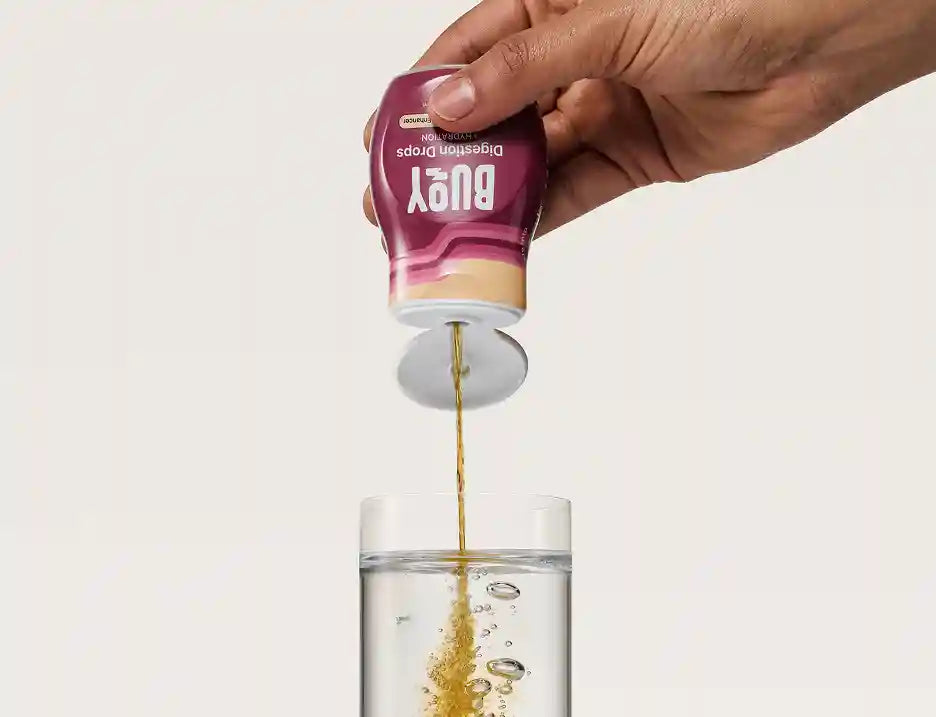
Navigating POTS in Colder Weather: Managing Symptoms and Triggers
Share
Winter can be a challenging season for those managing Postural Orthostatic Tachycardia Syndrome (POTS). Colder temperatures can worsen symptoms like poor circulation, fatigue, and dizziness, making it essential to adapt your routine to the season.
Essential Takeaways:
- Cold Weather Can Trigger POTS Symptoms: Did you know that cold weather often triggers POTS symptoms, such as poor circulation, increased fatigue, and difficulty regulating body temperature? These seasonal challenges require extra care.
- Stay Warm and Active to Manage POTS Symptoms: Combat cold weather triggers with practical strategies like laying for warmth, incorporating indoor low-impact exercises, and staying hydrated with warming drinks and electrolytes to maintain circulation and overall well-being.
This guide provides practical POTS winter tips to help you navigate cold weather, from staying warm and hydrated to managing energy levels and staying active indoors. With a little preparation, you can make the winter months more manageable and even enjoyable.
- How Cold Weather Impacts POTS Symptoms
- Dressing for Temperature Regulation
- Hydration and Nutrition Tips for Winter
- Managing Fatigue During Shorter Days
- Staying Active Indoors
- Winter Wellness with POTS: Stay Warm, Stay Balanced
How Cold Weather Impacts POTS Symptoms
Cold weather presents unique challenges for people with POTS. Here’s why.
Vasoconstriction and Blood Pressure
In colder temperatures, blood vessels constrict to conserve heat, which can increase blood pressure. For those with POTS, this process may be exaggerated, leading to dizziness, lightheadedness, or fainting, especially when transitioning from a sitting to standing position.
Poor Circulation
Cold weather causes blood vessels to constrict, reducing blood flow and exacerbating symptoms like dizziness, fatigue, and brain fog. For people with POTS, who are already prone to circulation issues, colder temperatures can lead to more noticeable numbness or tingling in extremities, such as fingers and toes.
Increased Fatigue
Shorter daylight hours and the extra energy used by your body to stay warm can leave you feeling more tired than usual. This can drain your daily energy reserves, making it difficult to complete even routine activities.
Dehydration Risk
Dehydration isn’t just a summer issue. In winter, you may feel less thirsty, which can lead to insufficient hydration. For POTS patients, this can worsen symptoms like dizziness, fatigue, and brain fog.
Joint and Muscle Discomfort
Cold weather can lead to stiffness and discomfort in your joints and muscles. This can further contribute to fatigue as your body works harder to stay warm and functioning.¹ ²
Understanding these challenges can help you prepare and manage your symptoms effectively during the colder months. Now that you know how cold weather triggers POTS symptoms, let’s go over what you can do to make cold weather days easier.
Learn more about how weather can affect your POTS symptoms in our guide to Understanding Environmental Triggers for POTS.
Dressing for Temperature Regulation
Staying warm is essential for managing POTS in winter. Here are some practical tips.
Layer Up
Wear layers that you can easily add or remove to adapt to temperature changes indoors and outdoors. Start with thermal base layers, add insulating mid-layers, and finish with a windproof and waterproof outer layer.
Wear Compression Garments
Add compression socks or leggings to your winter wardrobe to improve circulation and reduce blood pooling.
Use Warm Accessories
Don’t forget warm hats, gloves, socks, and scarves to keep your extremities warm, as cold hands and feet are common in POTS patients.
Try Heated Gear
Consider investing in heated blankets, jackets, or gloves for additional warmth on particularly cold days. But be cautious when using heated gear. Avoid prolonged direct skin contact to prevent burns, and always follow the manufacturer’s instructions for safe use.¹ ²
Managing your body temperature proactively can help prevent symptom flare-ups triggered by the cold. Incorporating these clothing tips into your winter routine ensures you’re prepared for temperature changes throughout the day.

Sipping warm drinks, like herbal teas or coffee with a squeeze of electrolytes, can help you stay hydrated and manage cold weather POTS symptoms.
Hydration and Nutrition Tips for Winter
Hydration is still important during colder months, even though you may not feel as thirsty. Here’s how to stay hydrated and nourished when it’s cold outside:
- Enjoy Warm Hydration: Sip on warm, hydrating drinks like herbal teas or broths. Add a squeeze of electrolytes to maintain balance and support circulation.
- Create a Hydration Schedule: Set reminders to drink water regularly throughout the day, as dehydration can worsen POTS symptoms.
- Eat Seasonally: Include warming foods like soups, stews, and root vegetables to your diet. These not only provide comfort but also supply essential nutrients to support your body. Get more nutrition tips in our POTS-Friendly Diet Guide.
- Get Enough Salt: Ensure adequate sodium intake to maintain blood volume. Consult your doctor to determine your ideal sodium levels.¹ ³
Stay ahead of winter’s dehydrating effects with consistent hydration and nutrient-dense meals. Learn more about maintaining optimal hydration year-round in our guide to Hydration Myths and Facts in POTS: Staying Hydrated the Right Way.
Managing Fatigue During Shorter Days
Winter’s shorter daylight hours can take a toll on your energy levels and mood. Try these strategies:
- Light Therapy: Use a light therapy box in the morning to mimic natural sunlight and help regulate your sleep-wake cycle.
- Energizing Routines: Start your day with gentle stretches or yoga to promote circulation and wake up your body.
- Rest and Recovery: Plan regular rest breaks throughout the day to prevent overexertion. Listen to your body and pace yourself.
- Social Connections: Stay connected with friends and family, even virtually, to combat feelings of isolation during the winter months.¹ ⁴
Consistency and self-care can help you combat fatigue and maintain your energy levels. For an added boost, try adding a squeeze of Buoy’s Energy Drops to your drinks.
Packed with clean caffeine from green tea, L-theanine, and essential electrolytes, these drops provide steady, no-jitters energy to help you power through your day.

Indoor activities, like walking on a treadmill, are excellent low-impact activities for POTS patients to stay active and improve circulation during colder weather.
Staying Active Indoors
Maintaining physical activity is important for seasonal POTS management, but cold weather can make outdoor exercise difficult. The good news is there are plenty of indoor options to keep your body moving and support circulation, strength, and flexibility even when it’s cold outside.
Seated Yoga
Gentle yoga poses are an excellent way to stay active while minimizing strain. Poses like the Seated Forward Bend and Cat-Cow Stretch are particularly beneficial for improving circulation, enhancing flexibility, and calming the nervous system.
These movements can be done seated in a chair or on the floor, making them accessible for all fitness levels.
Resistance Band Exercises
Using resistance bands for strength training is a low-impact way to build muscle and improve blood flow. Exercises like seated rows or leg presses can be performed while sitting or reclining, reducing the risk of orthostatic stress.
Resistance bands are compact and versatile, making them perfect for at-home workouts.
Indoor Walking
Walking in place or using a treadmill at a slow, steady pace is a simple way to maintain cardiovascular health without facing the cold. For added support, try holding onto a sturdy surface, such as a counter or chair, to help maintain balance.
Stretching Routines
Stretching is crucial for improving flexibility and reducing stiffness. Incorporate movements like hamstring stretches, where you gently extend your legs and reach for your toes, or wall push-ups to strengthen your upper body. Stretching can also be a great way to warm up or cool down from other activities.
Regular movement, even in small amounts, helps improve circulation and keeps your body limber, especially when outdoor activities aren’t an option. By adding these low-impact indoor exercises to your winter routine, you can stay active and support your health, no matter the weather.⁵ ⁶
Get detailed instructions for these movements and more in our guide to Low-Impact Exercises for POTS: Stretches, Yoga, and Gentle Workouts.
Winter Wellness with POTS: Stay Warm, Stay Balanced
Navigating winter with POTS can be challenging, but preparation and consistency make all the difference. Focus on staying warm, hydrated, and active with the POTS and cold weather tips we’ve shared in this guide.
Even small adjustments, like layering clothing or exercising indoors, can keep you comfortable and help manage your POTS symptoms effectively.
POTS and Cold Weather
Support your health and seasonal POTS management all winter long with Buoy’s Immunity Drops. Packed with vitamins, antioxidants, and electrolytes, they’re perfect for boosting hydration and immune health during the colder months.
Listen to Your Body
Remember, every POTS journey is unique—listen to your body, and don’t hesitate to consult your healthcare provider for personalized advice. With the right strategies, you can stay healthy all winter long.
Explore More Resources
Looking for more ways to thrive with POTS? Check out our POTS resource guides for additional support during the colder months—and year round!

Boost hydration and immune health during winter with Buoy’s Immunity Drops—perfect for managing POTS symptoms in colder months.
References:
-
Cleveland Clinic. (2022). Postural Orthostatic Tachycardia Syndrome (POTS). Retrieved from https://my.clevelandclinic.org/health/diseases/16560-postural-orthostatic-tachycardia-syndrome-pots
-
Rare Advocacy Movement. (2022). Thermoregulation Issues in Dysautonomia. Retrieved from https://www.rareadvocacymovement.com/post/thermoregulation-issues-in-dysautonomia
-
Self. (2024). What to Know About POTS, a Condition Marked by Dizziness and Fatigue That’s Often Misdiagnosed. Retrieved from https://www.self.com/story/what-is-pots
-
Health. (2024). What People With Chronic Illness Need to Know About the “October Slide.” Retrieved from https://www.health.com/october-slide-chronic-illness-worsen-8734139
-
Self. (2024). How to Safely Exercise With POTS, According to Experts. Retrieved from https://www.self.com/story/how-to-exercise-with-pots
- Fu, Q. & Levine, B. D. (2015). Exercise in the Postural Orthostatic Tachycardia Syndrome. Autonomic Neuroscience: Basic & Clinical, 188, 86–89. Retrieved from https://doi.org/10.1016/j.autneu.2014.11.008




